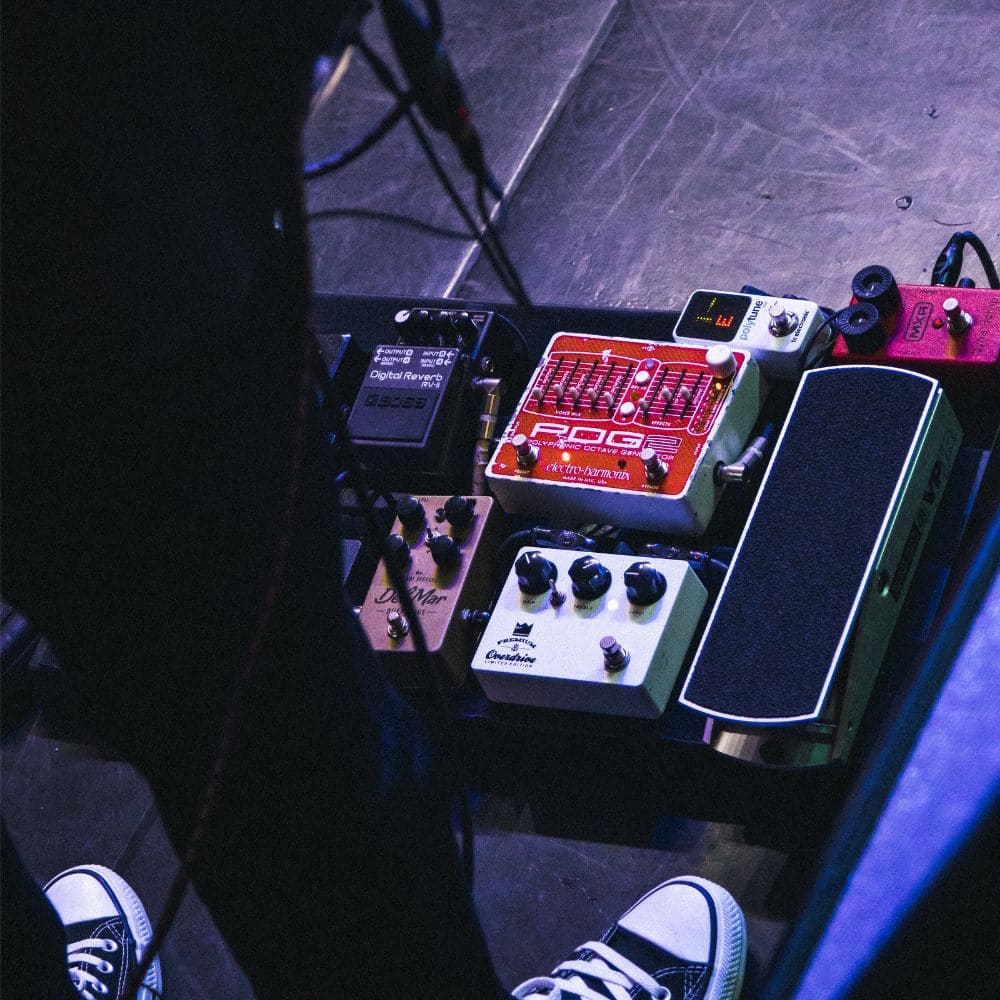What Does a Buffer Pedal Do?

Welcome to the world of buffer pedals!
I know, I know...you feel like you already have waaaayyyy too many effects on your pedalboard. But trust me - if you're trying to preserve that tone that you've worked so hard to fine-tune, then the best thing you can do for your guitar sound is to add a buffer.
A buffer pedal is a crucial tool in a guitarist's arsenal, serving to maintain the integrity of the instrument's signal and prevent the loss of tone through long cable runs and complex pedal setups.
Understanding the role and significance of buffer pedals is essential for any musician looking to optimize their sound quality and achieve a consistent, reliable tone.
In this article, we will delve deeper into the importance of buffer pedals in a guitarist's setup. We'll explore the key benefits of using buffer pedals, the different types available, and how to effectively set them up in your signal chain.
- Understanding the significance of buffer pedals
- Exploring the various types of buffer pedals
- Optimizing buffer pedal placement and setup
Answer to the Question
A buffer pedal, also known as a signal buffer, is an electronic device used in guitar setups to counteract signal loss caused by the capacitance of cables and the loading effect of multiple pedals in a chain.
It effectively maintains the clarity and strength of the instrument's signal, ensuring that the original tone remains intact throughout the entire signal chain.
Importance of Buffer Pedals
Preventing Signal Loss
Signal loss is a common issue that guitarists face when dealing with lengthy cable runs, effects pedals, and amplifiers. A buffer pedal plays a crucial role in preventing this signal loss by addressing impedance mismatch and capacitance issues that can compromise the quality of the instrument's tone.
- Impedance Matching: Without a buffer pedal, the impedance mismatch between the guitar, cables, and pedals can lead to significant signal loss. The buffer pedal ensures that the impedance is properly matched, preserving the integrity of the signal.
- Capacitance Compensation: The capacitance of cables and pedals can alter the instrument's tone, resulting in a loss of high-end frequencies. A buffer pedal compensates for this capacitance, maintaining the original tone of the guitar.
- Long Cable Runs: In instances where the guitar signal travels through lengthy cable runs, a buffer pedal is essential for preventing high-frequency roll-off and signal degradation.
- Noise Reduction: Buffer pedals also play a role in minimizing the noise introduced by long cable runs and multiple effects pedals, ensuring a clean and clear signal output.
Maintaining Signal Integrity
Buffer pedals play a crucial role in maintaining the integrity of a guitar's signal by ensuring that the original tone is preserved and the natural sound of the instrument is faithfully reproduced. By counteracting the detrimental effects of cable capacitance and pedal loading, buffer pedals effectively protect the signal integrity, resulting in a clearer, more articulate tone without any loss of high-frequency content.
Types of Buffer Pedals
Passive Buffer Pedals
Passive buffer pedals are essential components in a guitarist's signal chain, particularly for those using long cable runs or a large number of pedals. These pedals are designed to counteract the signal loss caused by the capacitance of cables and the loading effect of multiple pedals without altering the signal in any way. Here's an in-depth look at passive buffer pedals:
- Transparency: Passive buffer pedals are known for their transparency; they maintain the original tone of the guitar without introducing coloration or alteration.
- Preventing Signal Degradation: The primary function of passive buffer pedals is to prevent signal degradation. By restoring the high end and clarity of the signal, these pedals are vital for preserving the guitar's natural sound.
- Input Impedance Matching: They often feature high input impedance, which effectively matches the impedance of the guitar's pickups, ensuring that the signal remains strong and consistent throughout the chain.
- Output Low-Impedance: To drive the signal through longer cables and additional pedals, many passive buffer pedals output the signal with low impedance, minimizing the impact of cable capacitance and pedal loading.
Active Buffer Pedals
Active buffer pedals, unlike passive ones, are equipped with electronic circuitry to actively amplify and offset the impedance mismatch and capacitance of the signal chain. These pedals not only maintain the signal integrity but also provide additional signal boost, making them particularly beneficial for musicians with extensive pedalboards and long cable runs.
- Enhanced Signal Integrity: Active buffer pedals actively boost the input impedance, preventing high frequencies from being dampened and ensuring that the original sound remains clear and unaffected by the length of the signal chain.
- Improved Cable Runs: With the ability to offset the capacitance in long cable runs, active buffer pedals minimize the loss of treble frequencies and maintain a consistent and high-quality signal throughout the pedalboard setup.
- Signal Boost: In addition to maintaining signal integrity, active buffer pedals can provide a signal boost, compensating for any signal loss through multiple pedals and lengthy cable connections.
- Customization Options: Many active buffer pedals come with additional features such as EQ adjustments, tone shaping, and even additional effects, providing musicians with more versatility in their sound.
Buffer Pedal Placement and Setup
Placement in Signal Chain
The optimal placement of a buffer pedal in a guitar's signal chain is crucial for its effectiveness. Typically, the buffer pedal is placed at the beginning of the signal chain, directly after the guitar's output, to counteract the loading effect of subsequent pedals and maintain signal integrity throughout the entire signal path.
Connecting a Buffer Pedal
Connecting a buffer pedal involves ensuring that it is directly connected to the guitar's output and then linked to the subsequent pedals in the chain. This direct connection allows the buffer pedal to effectively counteract the impedance mismatch and capacitance, enabling the preservation of the instrument's original tone and preventing signal degradation.
Conclusion
Buffer pedals, as indispensable components in a guitarist's setup, play a pivotal role in maintaining the clarity, strength, and integrity of the instrument's signal. Whether it's a passive or active buffer pedal, the primary goal remains the same: preserving the original tone and preventing signal loss.
By understanding the importance, types, and placement of buffer pedals, musicians can optimize their signal chain and attain a consistent, reliable tone, ensuring that their music is heard exactly as intended.
Protect your tone by finding the perfect buffer pedal today.
*FYI, when you make a qualifying purchase through one of our links, we might receive a small commission from Amazon or other retailers, at no additional cost to you, which helps us to fund this site. It's a way to find what you're looking for while supporting us in the process!
